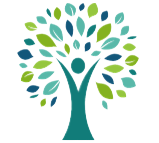Tree Pruning Techniques
Proper Tree Pruning Techniques for a Healthy Landscape
Pruning is an essential maintenance practice for keeping trees in your Albany landscape healthy, safe, and aesthetically pleasing. By following proper pruning techniques, you can encourage growth, prevent disease, and enhance the natural shape and beauty of trees like live oaks, magnolias, and crepe myrtles.
When to Prune Trees in Albany
Prune in Late Winter for Most Trees
The best time for pruning most deciduous trees is late winter while they are dormant. The exceptions are spring flowering trees like redbuds and dogwoods that should be pruned just after flowering. Live oaks and other evergreens can be pruned in late winter but also throughout the year.
Signs Your Tree Needs Pruning
Look for dead, damaged, and crossing branches. Trees may require pruning if they have branches obscuring streets or sidewalks, growth too close to your home, or lopsided or dense growth.
Tree Pruning Tools and Equipment
Hand Pruners for Smaller Cuts
Bypass pruners make clean cuts on branches up to about 1” diameter. Use secateurs for very small delicate branches. Pruners should be sharpened frequently for best results.
Loppers Tackle Medium 1”-2” Branches
Loppers have long handles like scissors and are ideal for branches too big for pruners but not large enough for saws. Aim for clean cuts without crushing.
Saw Larger Branches
Use hand saws for branches over 2” across. Curved saws work well to conform to branch collars. Chainsaws are necessary for very large branches.
Proper Pruning Techniques for Different Needs
Crown Cleaning Removes Dead Growth
Removing dead, dying, and broken branches improves tree health and appearance. Make cuts just outside the branch collar.
Crown Thinning Opens Light and Air
Selectively removing small live branches creates better structure and form. Avoid over-thinning which can harm trees.
Crown Raising for Clearance Pruning
Pruning lower branches provides clearance for streets, sidewalks, vehicles, and structures. Don’t remove over 1/3 of live branches.
Crown Reduction Controls Size
Removing branch tips controls height and spread without changing the overall shape. Make cuts at forked branches or buds.
How Much to Prune Your Trees
As a general rule, avoid removing more than 25% of live branches during one season. Removing too much foliage and branches can stress trees. Focus pruning on branches that are problematic or broken.
Making Proper Pruning Cuts
Always prune just outside the branch collar, the slightly swollen area where the branch joins the trunk or larger branch. Avoid “stub” cuts that leave protruding branches. Use clean, sharp tools for narrow cuts that heal quickly.
Aftercare Following Pruning
Inspect trees after pruning for any signs of disease or pests. Disinfect pruning tools after use. Properly dispose of debris since diseased branches can harbor pathogens. Monitor tree health and reaction to pruning over time.
Consulting an Arborist for Tree Pruning
For large trees or high pruning needs, work with a professional arborist. They have the experience, equipment, and training to safely prune your valuable landscape trees in Albany.
Properly pruning trees while young helps them develop strong structure and form. Follow these tree pruning tips to maintain attractive and healthy trees that enhance your landscape for years to come.
